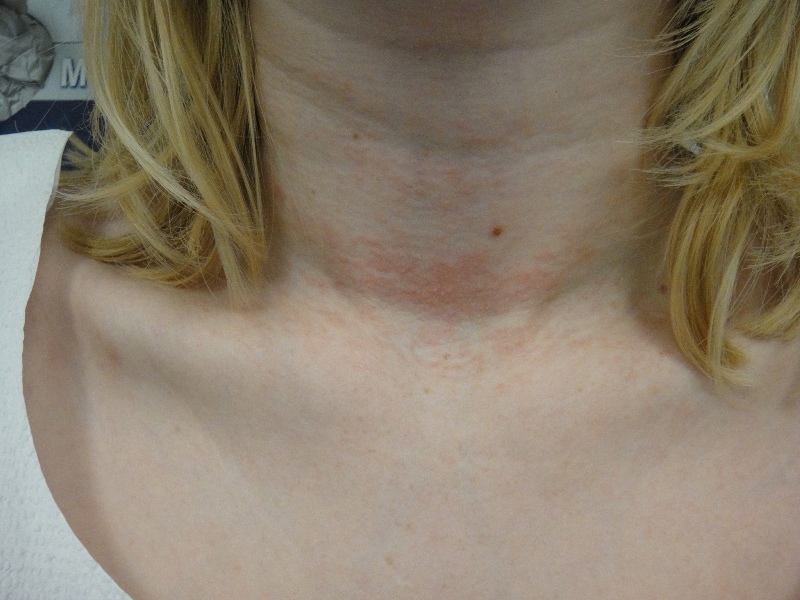CORRECT DIAGNOSIS:
Monilethrix
DISCUSSION:
Monilethrix is a rare hair shaft disorder that is most often inherited in an autosomal dominant manner. The condition often has high genetic penetrance and variable expressivity. Monilethrix is most often caused by defects in keratins 81, 83, or 86 (hHB6, hHB1). It can also be inherited as an autosomal recessive disorder with a mutation of desmoglein 4. The genes produce keratins found in the hair cortex leading to evenly spaced elliptical nodes along the hair shaft. The tapered constrictions cause weakness, leading to breakage and the appearance of generalized hair loss. The condition most commonly affects the hair of the occiput and nape but can present in a more diffuse manner affecting facial and body hair. The condition often becomes evident in early childhood with normal hair at birth, replaced with short, brittle hair. The disorder has been reported to appear as late as the second decade of life. Hairs rarely grow beyond 2 cm in affected areas. Diagnosis is typically made with light microscopy or dermoscopy. Patients with monilethrix often have concomitant keratosis pilaris of the arms and legs.
The progression and severity of monilethrix vary greatly between individuals. Following puberty, spontaneous remission has occurred in some cases. In affected females, the condition may improve or disappear during pregnancy. In others, monilethrix may remain constant throughout life or the symptoms may become progressively worse.
TREATMENT:
There is no specific treatment for monilethrix. Few case reports have shown some success with oral minoxidil 0.25 mg daily or topical minoxidil 5% daily. Other case reports have demonstrated improvement with retinoids including oral etretinate. Both minoxidil and oral retinoids showed an improvement of symptoms, however, remission frequently occurs after discontinuation of treatment. Patients should also exercise caution with trauma to hair shafts often caused by friction from wigs and the use of adhesives. Our patient was recommended topical minoxidil 5% daily and biotin supplements. She demonstrated only minor improvement in her hair length and density. Genetic counseling may benefit affected individuals and their families.
REFERENCES:
Bolognia JL, Jorizzo JL, Schaffer JV. Dermatology, 3rd Ed. Spain: Elsevier, 2012: 1001-1003
Bigbie B, Garcia C, Arthurs D, et al. Sparse Hair in a Female Toddler. J Am Acad Dermatol. 2013; 68(4): AB108
Whiting D. Structural Abnormalities of the Hair Shaft. J Am Acad Dermatol. 1987; 16(1): 1-25
Cheng A, Bayliss S. The Genetics of Hair Shaft Disorders. J Am Acad Dermatol. 2008; 59(1): 1-22
Sinclair R. Treatment of Monilethrix with Minoxidil. JAAD Case Rep. 2016; 2(3): 212-215




